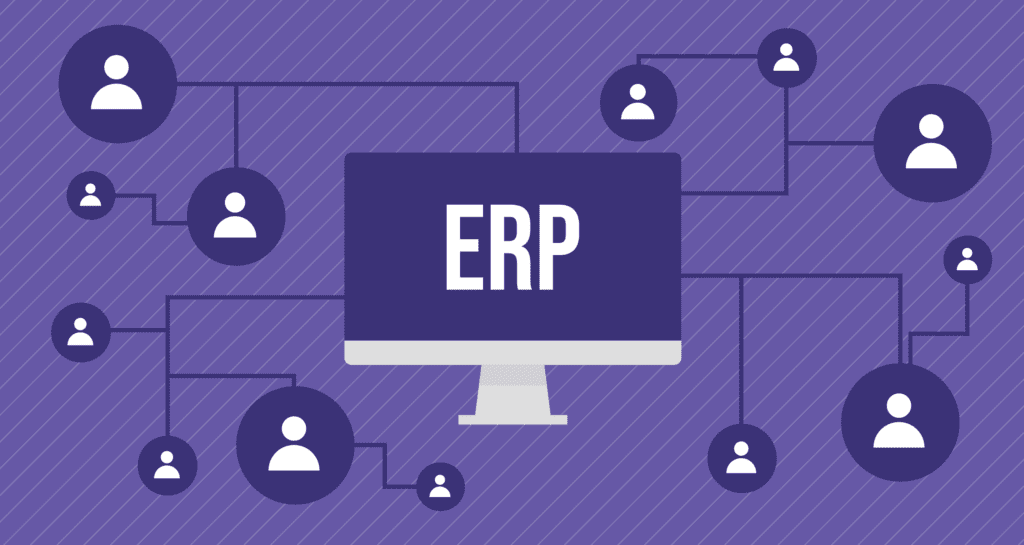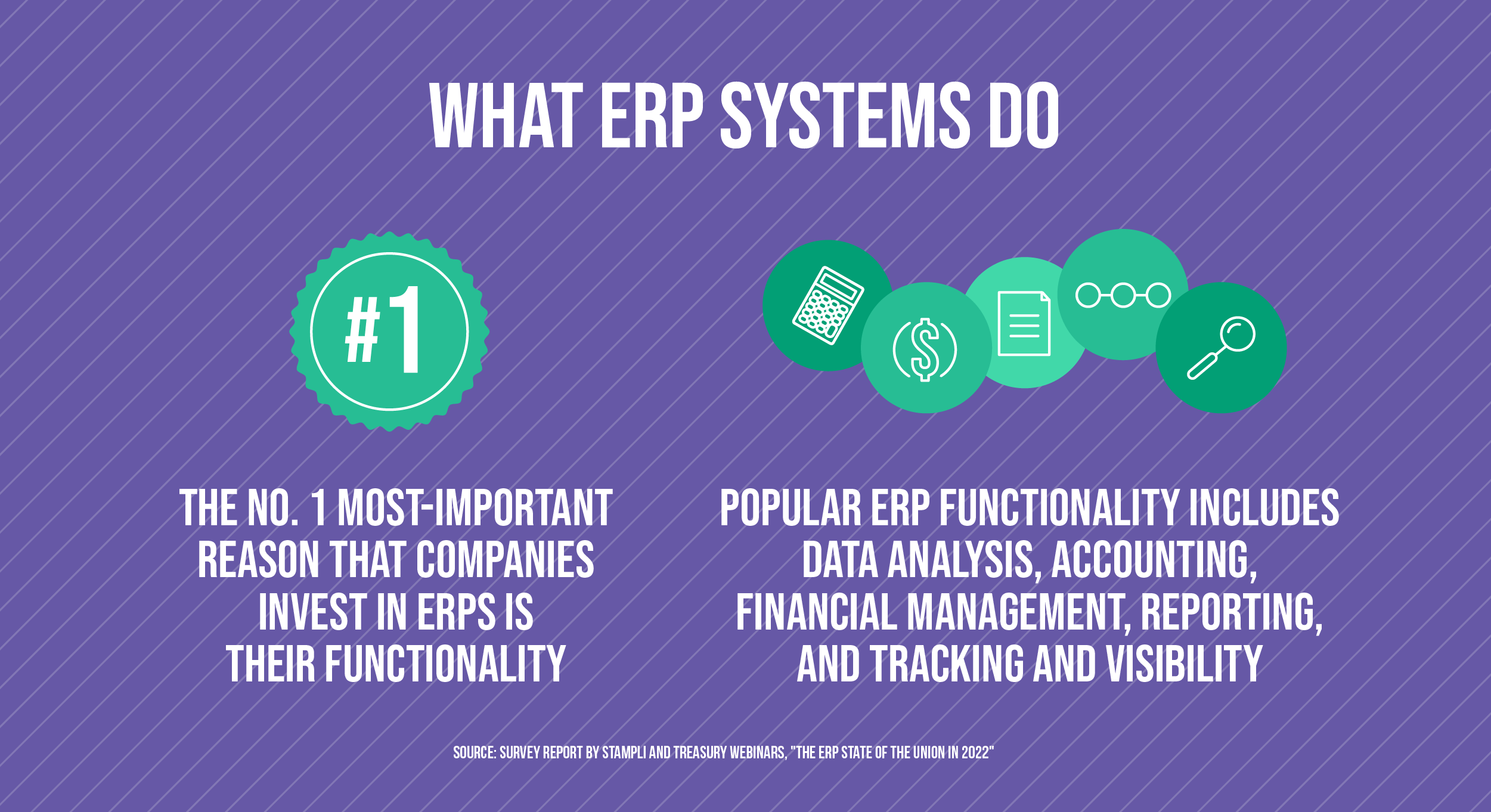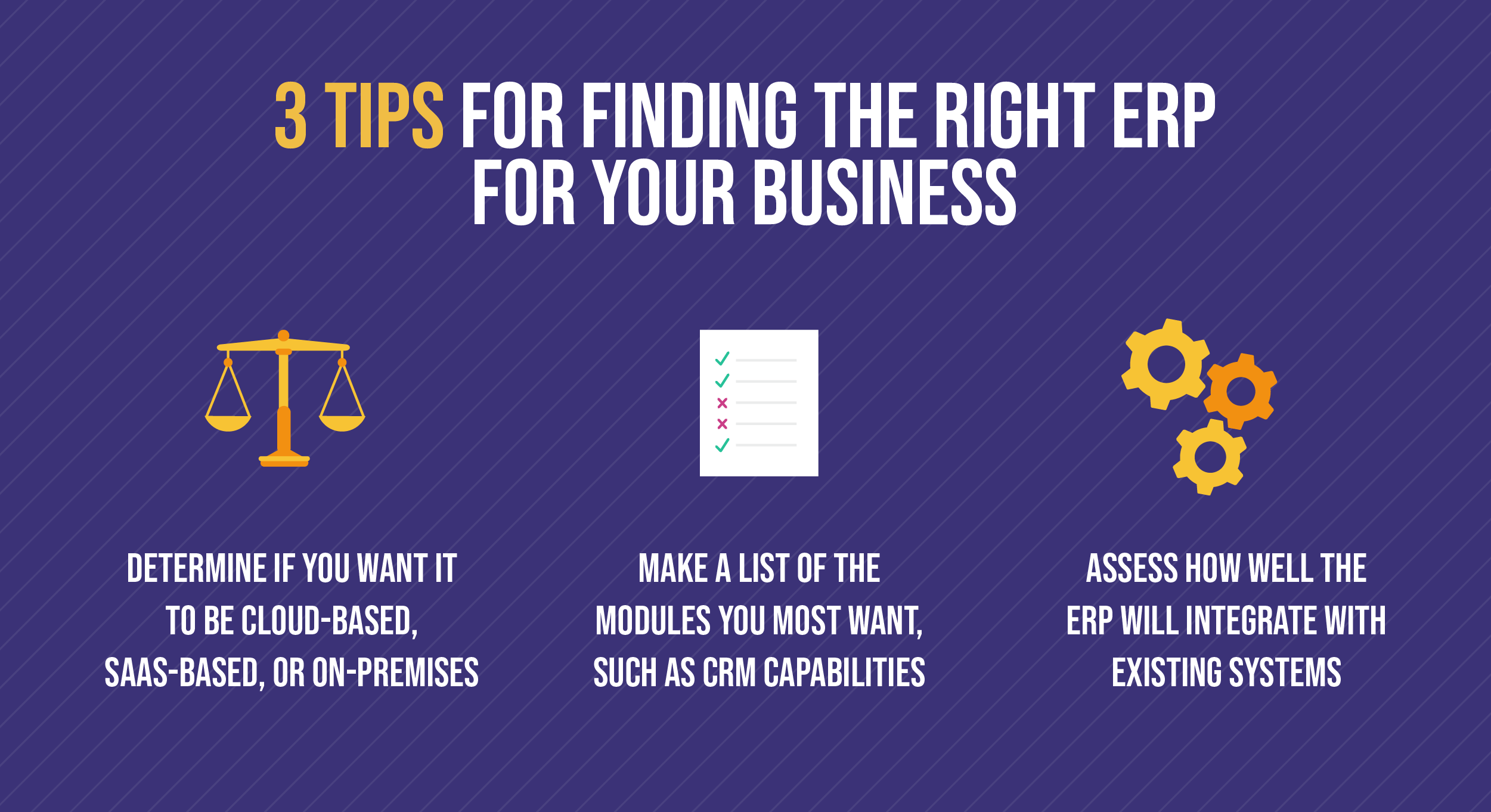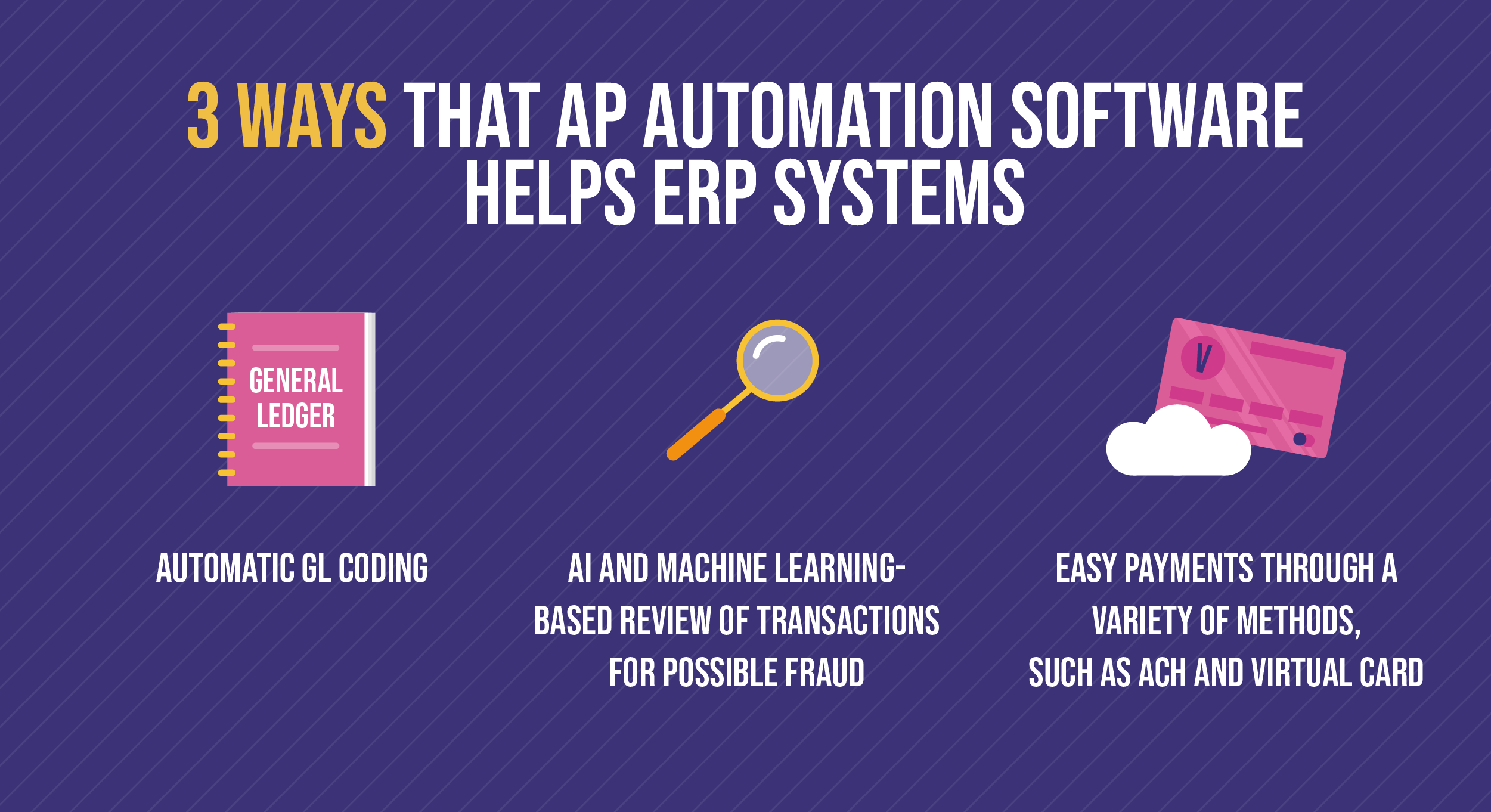ERP and Accounts Payable Integration: Why to Include Stampli

When a business is considering implementing an enterprise resource planning, or ERP system, one of the first internal units that it might look to is its accounts payable department.
After all, a company’s AP staff could wind up making heavy use of the ERP, from accessing and updating general ledgers to making sure master vendor lists are up to date. In addition, different accounts payable technology, such as AP automation platforms, might need to interact with the ERP system. As such, it’s important to make accounts payable a key stakeholder in an ERP implementation.
Today, we’re going to look at what it takes to help ERP solutions and accounts payable departments integrate optimally with one another. We’ll also look at why AP automation platforms such as Stampli are so vital to making ERP implementations a success.
ERP and Accounts Payable Integration Basics
Businesses get ERP software systems for a lot of reasons. But most importantly, companies seem to acquire the systems because of everything they can do.
A survey report by Stampli and Treasury Webinars, “The ERP State of the Union in 2022”, found that the No. 1 most-important reason for ERP investments, cited by 22% of respondents, was functionality. The functionality of ERP systems can include popular features related to business processes such as data analysis, accounting, financial management, reporting, and tracking & visibility.

ERP platforms are often a core component for businesses, like a central nervous system or a digital center of intelligence for a company. They can monitor supply chains, keep an eye on budgets and profitability, and retain important data.
Certainly, ERP systems aren’t for every business, such as many freelancers or small mom-and-pop operations. But for the right companies, ERPs are an essential tool and well worth the investment. Many companies that purchase ERPs appreciate the technology – Stampli and Treasury Webinars’ ERP survey found that 79% of respondents were either satisfied or very satisfied with their ERP purchase.
How Accounts Payable Departments Make Use of Technology
The first thing to note here is that AP staff often doesn’t make use of technology, at least across the board. While 68% of companies have digitized payments, according to a 2021 survey report by Stampli and Treasury Webinars, “The How, the Why & the ROI of AP Automation”, many manual processes remain in the world of both accounts receivable and accounts payable.
When it comes to the AP process, it’s easy to find things still being done by hand, even if they don’t have to be. Sometimes, companies still have staff manually inputting supplier invoices or three-way matching them with purchase orders and receipt reports. Businesses might have approvals being done by hand, even if it runs the risk of missing critical due dates for payment discounts, making late payment, or throwing off cash flow.
It’s understandable why AP teams might sometimes be slow to adopt new technology. There just sometimes isn’t a lot of motivation to change, unless the shift is perceived as money-saving or a way to please important vendors. Still, there can be incentives for accounts payable departments and their companies to invest in ERP systems.
Why ERP Systems and AP Teams Should Work Together
ERP systems can be worth having for accounts payable because of how many applications they provide for this area of business.
PYMNTS.com noted in August 2022 that ERP systems were a critical component of “B2B payment improvements, sparing accounting staff extra work by automating routine procedures such as payments, invoicing, and other tedious tasks that distract professionals from more strategic work.”
ERPs help AP teams do the work they need to do. Curiously, as we’ll delve into more in a bit, the right AP technology also helps ERPs to function optimally.
Another reason to be sure to have ERP systems and AP teams working collaboratively is that it can ensure the new platform works with existing company systems and that staff is able to properly leverage it. In the next section, we’ll look at a few tips for making ERP and accounts payable integration as smooth as possible.
3 Tips for Integrating Your ERP Tool and AP Department
From the moment a company starts seriously considering purchasing an ERP system, it will want to formulate a plan for how the platform will fit in with its existing AP department. Doing this will provide a lot of benefits, but most importantly perhaps, it will ensure a maximum ROI for the new system.
For an ERP implementation to become a well-used part of an AP department, here are three things to consider:
1. Choose an ERP System Right for Your Business
One great thing about the ERP market these days is that companies aren’t just restricted to using one or two major vendors. Businesses also aren’t stuck having to DIY a proprietary system that might wind up needing endless support from internal IT staff. Thanks in part to the rise of SaaS and cloud-based systems in recent years, there’s no shortage of potential ERP options.
Stampli and Treasury Webinars’ recent ERP survey looked at the three most popular systems. It found:
- The No. 1 response, from 43% of respondents, was Microsoft Dynamics 365 Finance;
- The No. 2 response, from 37% of respondents, was Oracle;
- The No. 3 response, from 34% of respondents, was SAP/SAP Business One.
Other ERP systems that respondents said they were using included Oracle NetSuite, Workday, Microsoft Dynamics GP, Sage 100, Infor, and Sage Intacct. Many businesses use more than one ERP.

With so many options on the market, companies can take their time choosing an ERP system that’s right for their business. There isn’t a hard-and-fast rule for finding an ideal ERP (and, in fact, trying too hard to find the perfect system can be detrimental.) But companies will likely want to consider factors during their ERP procurement process such as: whether they want the system to be cloud-based, SaaS-based, or on-premises; which modules they most want, such as CRMs; and whether their existing systems and hardware can integrate with the prospective ERP.
2. Prepare to Invest for a Good ERP
Companies might sometimes shy away from tech like ERP systems because of the costs involved.
ERP systems certainly aren’t cheap, often running from $150,000 to $750,000 for businesses. Fees can be user-based, with costs for ERPs running into the millions for mid-size (100-999 employees) or enterprise-level (more than 1,000) companies. There’s also a significant time requirement to get an ERP system fully operational.
It’s unwise, however, to try to skimp on costs by choosing a cut-rate ERP system. While there can be solutions at every price point, at least within reason, sometimes a company is going to have to make a sizable investment to get the ERP that’s right for its needs.
It’s the same thing as when buying a car or a house or when hiring an employee. For quality, sometimes one just has to pay up.
3. AP Automation Software Can Optimize Your ERP
ERPs are superb business tools, but they have their limits, as PYMNTS.com noted in an August 2022 study. “Ninety-nine percent of businesses reported that they struggled to access information stored in their ERP systems, and 82% said their ERP systems were making decisions based on old and obsolete data,” the study noted. “Another 85% said this bad data led to incorrect business decisions and lost revenue.”
Clearly, businesses will want every tool at their disposal so that the best data is entered and retrieved from their ERPs. One great way to do this is by having an AP automation solution to streamline invoice processing. Accounts payable automation software can be a source of real-time data and configurable approval workflows as well as an instant document management repository for items like vendor invoices and purchase orders.
Payments Journal noted in December 2021 that through AP automation’s capacity to automatically recognize and connect patterns of payment, businesses could optimize operations and lessen costly mistakes. “If, for example, an automated AP system notices that a large number of customers send payments to the same supplier, companies can choose to efficiently bundle payment data to import right into the ERP (enterprise resource planning) system for processing,” the site noted.

It’s why having a payable solution like Stampli is so vital for maximizing the value of an ERP system.
How Stampli Works With Your ERP
We provide cutting-edge, SaaS-based accounting software that can transform the payable process. From everything from data entry to cash management, we help invoices get processed faster, cheaper, and better.
An AP automation solution like Stampli is also vital to helping your company’s ERP investment flourish. Here’s why:
An AP Automation Platform That Integrates Smoothly
Sometimes, companies might purchase ERP software only to find that some of their software doesn’t work with the new system. Thankfully, companies never have to worry about this with Stampli’s AP automation software.
Simply put, we make some of the most versatile AP software on the market, able to integrate with nearly every major ERP provider on the market. The number of AP automation integrations we can handle is unmatched.
Payable Software That Automates Your Entire P2P Process
Stampli isn’t just software that scans invoices or does a few other rudimentary tasks electronically. We automate the entire procurement-to-payment, or P2P process.
Our software is equipped to catch invoices as soon as they reach the AP staff’s email inboxes. Stampli can get these invoices entered into the system and even provide general ledger, or GL coding. From there, we can help companies automate three-way matching, approvals, payments, and reconciliations. Our AI virtual assistant Billy the Bot also uses machine learning to review past transactions for possible signs of fraud.
Able to Scale with Your Business As Your ERP Needs Change
As we noted earlier, there are a lot of different ERP platforms on the market. And over time, companies might grow from one ERP system to another as needs change.
Stampli, though, can grow and scale with businesses. No matter the ERP that a business might be using, Stampli’s AP automation platform can be there, helping a company master its accounts payable and payment processing.
ERP systems are a major investment. Use Stampli’s AP automation platform to maximize your ROI.
